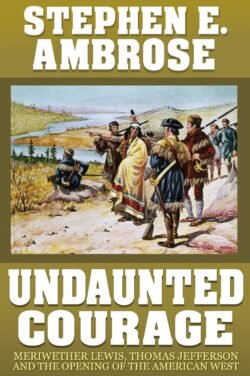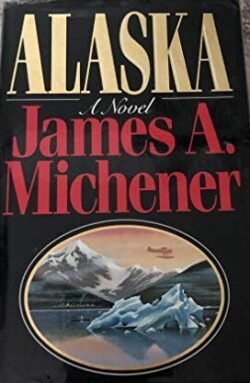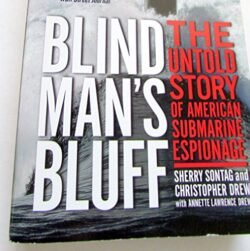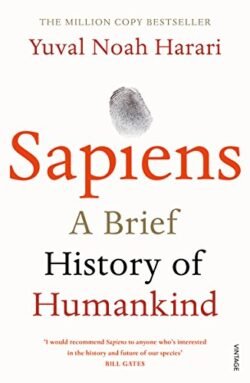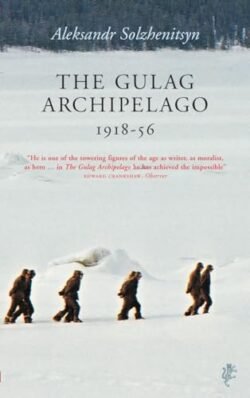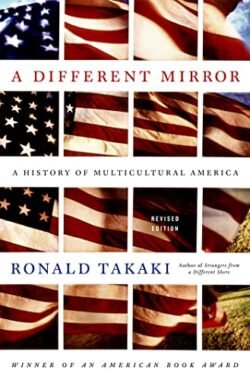“Undaunted Courage: Meriwether Lewis, Thomas Jefferson, and the Opening of the American West” by Stephen E. Ambrose, first published in 1996, is a compelling narrative that chronicles the Lewis and Clark Expedition, one of the most significant exploratory missions in American history. The book delves into the personal and professional relationship between President Thomas Jefferson and Meriwether Lewis, whom Jefferson tasked with leading the expedition after the Louisiana Purchase. Ambrose provides a detailed account of the preparation, challenges, and achievements of the expedition, highlighting Lewis’s leadership and the contributions of his co-leader William Clark, as well as the indispensable role of Sacagawea, a Shoshone interpreter. “Undaunted Courage” paints a vivid picture of the uncharted American frontier, the interactions with Native American tribes, and the scientific and geographic discoveries made along the way. Character Analysis The narrative follows Meriwether Lewis from his early life and military career to his selection by Jefferson as the leader of the Corps of Discovery. Ambrose uses journals, letters, and historical documents to reconstruct the journey, emphasizing the expedition’s significance in mapping the West, establishing relationships with Native American tribes, and documenting the region’s diverse flora and fauna. Themes and Analysis Exploration and Discovery: The book captures the spirit of adventure and the drive for knowledge that motivated the Lewis and Clark Expedition. Leadership and Friendship: Ambrose explores the leadership qualities of Lewis and Clark, as well as their strong bond, which was crucial for the expedition’s success. Cultural Encounters: The interactions between the expedition members and the Native American tribes they encountered are depicted with nuance, highlighting moments of cooperation and conflict. “Undaunted Courage: Meriwether Lewis, Thomas Jefferson, and the Opening of the American West” is not just a historical account but a story of adventure, friendship, and the human spirit’s quest for knowledge. Stephen E. Ambrose’s meticulous research and engaging narrative style bring to life the daring journey of Lewis and Clark, offering readers a window into the challenges and wonders of exploring the unknown. The book stands as a tribute to the men and women who played pivotal roles in expanding the boundaries of the young United States and deepening our understanding of the vast American landscape. If the summary caught your interest, Consider reading the full book on AbeBooks.
The Nightingale
“The Nightingale” by Kristin Hannah, published in 2015, is a poignant historical fiction novel set in France during World War II. The story captures the resilience, courage, and sacrifices of two sisters, Vianne Mauriac and Isabelle Rossignol, as they navigate the challenges and horrors of the German occupation. Vianne, a teacher and mother, must fight to protect her home and daughter when her husband is taken prisoner. Meanwhile, Isabelle, impulsive and rebellious, becomes involved in the French Resistance, risking her life to save others. “The Nightingale” explores themes of love, war, family, and the extraordinary acts of heroism that ordinary people can perform in the darkest times. Character Analysis Vianne Mauriac: Vianne represents resilience and the struggle to maintain normalcy and protect her loved ones in the face of war. Her character development throughout the novel showcases her transformation from a passive observer of the war to an active participant in survival and resistance. Isabelle Rossignol: Isabelle embodies the spirit of defiance and courage. Her work with the Resistance highlights the role of women in wartime and the capacity for individuals to make a significant impact despite overwhelming odds. Themes and Analysis The Strength of Women in War: “The Nightingale” emphasizes the often-overlooked role of women during WWII, showcasing their strength, bravery, and contributions to the war effort. Sacrifice and Survival: The novel explores the sacrifices made by individuals during times of conflict, both on the battlefield and the home front, highlighting the complexity of survival and moral choices in war. Love and Loss: At its heart, the story is also about love—romantic, familial, and platonic—and the deep losses endured by those living through the war. “The Nightingale” is a tribute to the silent heroes of World War II, particularly the women who fought their own battles within the occupied territories. Kristin Hannah’s evocative storytelling and well-drawn characters offer a moving and immersive experience, shedding light on the courage and resilience of those who lived through one of history’s darkest periods. The novel has resonated with readers worldwide, earning acclaim for its detailed research, emotional depth, and its celebration of the human spirit’s capacity to persevere and resist in the face of overwhelming adversity. If the summary caught your interest, Consider reading the full book on AbeBooks. Explore this book on AbeBooks
Alaska
“Alaska” by James A. Michener, published in 1988, is an epic historical novel that spans thousands of years, tracing the history of Alaska from the prehistoric era through the end of the 20th century. Michener, known for his exhaustive research and ability to weave factual history with engaging narrative, tells the story of Alaska’s development through a series of interconnected tales involving the region’s indigenous peoples, explorers, settlers, and later inhabitants. The novel covers significant events and periods in Alaska’s history, including the migration of Native American tribes across the Bering Land Bridge, the impact of Russian colonization, the Alaska Gold Rush, and the state’s strategic role during World War II. Michener explores the harsh yet majestic landscapes of Alaska, its vast resources, and the diverse cultures that have called it home, all while examining the themes of survival, conflict, and coexistence in this formidable environment. Character Analysis As “Alaska” is a work of historical fiction, it features a wide array of characters from different eras, each contributing to the rich tapestry of the state’s history. These characters, both fictional and based on real historical figures, embody the spirit of adventure, resilience, and ambition that defines Alaska. From native Inuit and Tlingit tribes to Russian fur traders, gold miners, and American soldiers, each character’s story provides insight into the challenges and opportunities presented by the Alaskan wilderness. Themes and Analysis Human Interaction with Nature: A central theme of “Alaska” is the relationship between humans and the natural environment. Michener vividly depicts how Alaska’s geography and climate have shaped the lives of its inhabitants and their activities, from subsistence hunting and fishing to the exploitation of its natural resources. Cultural Convergence and Conflict: The novel examines the interactions among Alaska’s diverse cultural groups, highlighting moments of both cooperation and conflict. It explores the impact of colonization, the clash of civilizations, and the blending of traditions that characterize the state’s history. Change and Continuity: Through its sweeping historical scope, “Alaska” reflects on the forces of change that have transformed the region, as well as the enduring aspects of its identity. Michener addresses issues of sovereignty, economic development, and political change, all while paying homage to the timeless beauty of the Alaskan landscape. James A. Michener’s “Alaska” is a monumental work that captures the essence of a region marked by its vastness, beauty, and complexity. Through detailed historical research and compelling storytelling, Michener offers readers a panoramic view of Alaska’s evolution, from its earliest inhabitants to modern times. The novel is not only a tribute to the state’s rich history and cultural diversity but also a reflection on the broader themes of human endurance, the quest for prosperity, and the impact of human activities on the environment. “Alaska” remains an essential read for anyone interested in the history of this unique and captivating part of the world. If the summary caught your interest, Consider reading the full book on AbeBooks. Explore this book on AbeBooks
Blind Man’s Bluff: The Untold Story of American Submarine Espionage
“Blind Man’s Bluff: The Untold Story of American Submarine Espionage” by Sherry Sontag, Christopher Drew, and Annette Lawrence Drew, first published in 1998, is a gripping account of the secretive world of submarine espionage during the Cold War. The book sheds light on the dangerous and clandestine operations of the U.S. Navy’s submarine force, revealing how American submarines covertly tracked Soviet submarines and tapped undersea cables, gathering crucial intelligence. Through detailed research and interviews with key figures involved in these missions, “Blind Man’s Bluff” uncovers the high-stakes games of cat and mouse played beneath the waves, offering insights into the technological innovations and human courage that played a critical role in these operations. Character Analysis As a non-fiction work focused on historical events, “Blind Man’s Bluff” does not feature characters in the traditional sense but highlights real-life naval officers, crew members, and intelligence operatives. These individuals are portrayed through their involvement in various espionage missions, showcasing their bravery, ingenuity, and dedication to their covert tasks. Themes and Analysis Secrecy and Espionage: The book explores the theme of secrecy in military operations, detailing the lengths to which the U.S. Navy went to gather intelligence on Soviet naval capabilities without detection. Technological Warfare: “Blind Man’s Bluff” highlights the role of technological innovation in Cold War espionage, including the development of sophisticated listening devices and the risks involved in deploying them. Ethical and Political Dilemmas: The narrative also delves into the ethical and political implications of submarine espionage, questioning the morality of spying and the potential consequences of these actions on international relations. “Blind Man’s Bluff: The Untold Story of American Submarine Espionage” provides a fascinating glimpse into a largely hidden aspect of Cold War history. By combining thorough research with compelling storytelling, the authors offer a detailed account of the daring and dangerous world of submarine espionage. The book not only pays tribute to the unsung heroes of these missions but also prompts readers to consider the broader implications of espionage on global politics and security. “Blind Man’s Bluff” is an essential read for those interested in military history, naval warfare, and the complex interplay of technology and intelligence in the shadowy depths of the Cold War. If the summary caught your interest, Consider reading the full book on AbeBooks. Explore this book on AbeBooks
Sapiens: A Brief History of Humankind
“Sapiens: A Brief History of Humankind” by Yuval Noah Harari, first published in 2011, is a thought-provoking exploration of the history of the human species from the emergence of Homo sapiens in Africa up to the 21st century. Harari weaves together insights from anthropology, psychology, economics, and other disciplines to examine how Homo sapiens came to dominate the planet. The book is divided into four parts: The Cognitive Revolution, The Agricultural Revolution, The Unification of Humankind, and The Scientific Revolution. These sections delve into the development of human societies, the creation and impact of complex cultures, the rise of empires and political systems, and the technological advancements that have dramatically reshaped human life. Character Analysis As a non-fiction work that spans across centuries of human history, “Sapiens” does not follow a traditional narrative structure with characters. Instead, Homo sapiens, or modern humans, are the central focus, with Harari analyzing how their cognitive abilities, social structures, and cultural innovations have evolved over time. Themes and Analysis Cognitive Development: Harari emphasizes the Cognitive Revolution, approximately 70,000 years ago, as a pivotal moment that enabled Homo sapiens to surpass other species through the development of language, art, and complex social structures. Impact of Agriculture: The Agricultural Revolution is presented as a double-edged sword that allowed human populations to grow but also led to social hierarchies, harder work, and new forms of inequality. Power of Shared Myths: A recurring theme is the role of shared beliefs and myths in creating large-scale human cooperation, ranging from religions and political ideologies to economic systems like capitalism. Technological Progress and Future Challenges: The book discusses the ongoing Scientific Revolution, raising questions about the future of Sapiens in the face of rapid technological change, potential ecological collapse, and advances in biotechnology and artificial intelligence. “Sapiens: A Brief History of Humankind” offers a sweeping overview of human history, challenging readers to consider the ways in which biology, history, and the capacity for storytelling have shaped the world. Harari’s engaging narrative and interdisciplinary approach make complex concepts accessible and compelling. The book not only recounts the past but also prompts reflection on the future of Homo sapiens, making it a seminal work for understanding humanity’s place in the history of the Earth and pondering what lies ahead. Harari’s insights into human nature, power, and the potential paths for our species provoke deep thought and discussion, cementing “Sapiens” as a must-read for anyone interested in the story of humankind. If the summary caught your interest, Consider reading the full book on AbeBooks. Explore this book on AbeBooks
The Gulag Archipelago
“The Gulag Archipelago” by Aleksandr Solzhenitsyn, a monumental work first published in the West in 1973, is a comprehensive and harrowing account of the Soviet Union’s forced labor camp system and political repression from 1918 to 1956. This three-volume, non-fiction work combines historical research, eyewitness accounts, and Solzhenitsyn’s own experiences as a prisoner in the Gulag. Through its detailed exposition, Solzhenitsyn exposes the brutality, inhumanity, and systematic injustices of the Gulag system, highlighting the totalitarian regime’s mechanisms of control and the erosion of human rights under Soviet rule. The book played a significant role in revealing the extent of the atrocities committed in the Soviet gulags to the global audience and contributed to the understanding of the totalitarian nature of the Soviet government. Solzhenitsyn’s work is not only a historical record but also a deeply philosophical exploration of the nature of power, the morality of the state, and the resilience of the human spirit in the face of oppression. Character Analysis As a historical and autobiographical account, “The Gulag Archipelago” centers around the experiences of its author, Aleksandr Solzhenitsyn, along with those of numerous other inmates and officials within the Gulag system. Solzhenitsyn serves as both a narrator and participant, offering a detailed examination of the psychological and moral implications of the camp system on both the prisoners and their captors. Themes and Analysis Totalitarianism and Repression: The work is a profound critique of the Soviet totalitarian regime, showcasing how the state used terror, surveillance, and the Gulag system to suppress dissent and control the populace. Human Suffering and Dignity: Solzhenitsyn illuminates the immense suffering endured by the prisoners, while also highlighting instances of courage, solidarity, and the struggle to maintain dignity under the most dehumanizing conditions. The Nature of Evil: The book delves into the philosophical and moral questions surrounding evil, particularly the ease with which ordinary individuals can become complicit in systemic atrocities. “The Gulag Archipelago” is an essential work of twentieth-century literature and historiography, offering an unparalleled insight into the realities of the Soviet Union’s labor camps and the broader implications of totalitarian governance. Aleksandr Solzhenitsyn’s masterful synthesis of narrative and analysis provides a powerful testament to the endurance of the human spirit and serves as a stark warning against the dangers of unchecked political power. Its publication was a watershed moment in the Cold War, significantly impacting public opinion and the intellectual critique of communism and totalitarian regimes worldwide. If the summary caught your interest, Consider reading the full book on AbeBooks. Explore this book on AbeBooks
The Five Thousand Year Leap
“The Five Thousand Year Leap: 28 Great Ideas That Changed the World” by W. Cleon Skousen, first published in 1981, is a book that presents the author’s view of the foundational principles that guided the founding of the United States of America. Skousen argues that the creation of the U.S. Constitution marked a significant leap forward in the history of human liberty and governance. The book outlines twenty-eight principles that Skousen believes were key to this leap, drawing from the ideas of the Founding Fathers and influential Enlightenment thinkers. These principles include the importance of moral and virtuous leaders, the necessity of a written constitution, the benefits of a free-market economy, and the role of religion in public life, among others. Skousen’s work has been influential in some conservative and libertarian circles, sparking discussions about the interpretation of American history and the original intent of the Constitution. Character Analysis As a non-fiction work focused on political philosophy and history, “The Five Thousand Year Leap” does not contain characters or a narrative storyline. Instead, Skousen himself serves as a guide through the principles he identifies, using historical analysis and interpretation to argue for their significance in the founding and development of the United States. Themes and Analysis Foundational Principles of America: Skousen emphasizes the unique nature of the American experiment, arguing that the Founding Fathers incorporated timeless principles of governance that enabled unprecedented freedom and prosperity. Moral and Religious Foundations: A recurring theme is the importance of moral and religious values in public life and governance, which Skousen sees as essential to the success of the American republic. Limited Government and Individual Freedom: The book champions limited government, the separation of powers, and the protection of individual rights as core principles that protect freedom and ensure effective governance. “The Five Thousand Year Leap” offers a perspective on American history and constitutional principles that celebrates the innovations of the Founding Fathers. While Skousen’s interpretations and the emphasis on certain principles have been subject to debate and criticism, the book remains a popular work among readers interested in conservative and libertarian views of American history. It provides a framework for understanding the political and philosophical underpinnings of the United States, advocating for a return to what Skousen identifies as the core values and ideas that have made the country successful. Whether one agrees with Skousen’s analysis or not, “The Five Thousand Year Leap” stimulates discussion on the nature of American democracy and the ideals that continue to shape its evolution. If the summary caught your interest, Consider reading the full book on AbeBooks. Explore this book on AbeBooks
A Different Mirror: A History Of Multicultural America
“A Different Mirror: A History of Multicultural America” by Ronald Takaki is a landmark work that re-examines the history of the United States through the diverse experiences of minority groups. First published in 1993, Takaki’s book challenges the traditional narrative of American history, which often centers on the contributions and perspectives of European settlers and descendants. Instead, “A Different Mirror” highlights the stories of Native Americans, African Americans, Asian Americans, Latino Americans, and other marginalized groups, demonstrating how their contributions have shaped the nation. Through a multicultural lens, Takaki explores themes of immigration, labor, assimilation, and resistance, offering a more inclusive and complex view of American history. Character Analysis As a historical analysis, “A Different Mirror” does not follow a narrative structure with characters but presents historical figures, communities, and their stories to illustrate the United States’ diverse cultural landscape. Takaki himself serves as a guide, weaving together various threads of American history into a cohesive narrative that gives voice to those often excluded from mainstream historical accounts. Themes and Analysis Diversity and Multiculturalism: The core theme of the book is the richness of America’s multicultural heritage, arguing that the nation’s identity is shaped by the interplay of various cultural influences. Racism and Discrimination: Takaki delves into the systemic racism and discrimination faced by minority groups throughout American history, analyzing its impact on shaping both individual lives and national policies. Resistance and Resilience: The book celebrates the resilience and resistance of marginalized communities, highlighting how they have fought for their rights and contributed to the ongoing struggle for equality and justice. “A Different Mirror: A History of Multicultural America” by Ronald Takaki offers a vital reevaluation of American history, emphasizing the importance of understanding the nation’s past from multiple perspectives. Takaki’s comprehensive and empathetic approach uncovers the struggles and triumphs of America’s diverse populations, providing readers with a deeper appreciation of the complex tapestry that constitutes the United States. This seminal work is essential reading for anyone interested in American history, cultural studies, and the ongoing dialogue about diversity and inclusion in society. Takaki’s legacy continues to inspire a more inclusive approach to history, one that recognizes the contributions and experiences of all Americans. If the summary caught your interest, Consider reading the full book on AbeBooks. Explore this book on AbeBooks
We Were Soldiers Once.and Young: Ia Drang – The Battle That Changed the War in Vietnam
“We Were Soldiers Once…and Young: Ia Drang – The Battle That Changed the War in Vietnam” by Lt. Gen. Harold G. Moore (Ret.) and Joseph L. Galloway is a riveting account of the first major battle between the U.S. Army and the North Vietnamese forces in November 1965. This book provides a detailed and harrowing depiction of the Battle of Ia Drang, where Moore commanded the 1st Battalion, 7th Cavalry Regiment. Through firsthand experiences, the authors offer a profound insight into the realities of combat, the bonds formed among soldiers, and the strategies that defined the early stages of the Vietnam War. Character Analysis Lt. Gen. Harold G. Moore (Ret.): Moore is not only a co-author but also a central figure in the narrative, showcasing exemplary leadership and tactical acumen during the Battle of Ia Drang. His character exemplifies courage, compassion, and a deep sense of responsibility towards his men. Moore’s leadership style and decision-making processes under extreme pressure provide readers with a nuanced understanding of what it means to command in the heat of battle. Joseph L. Galloway: Galloway, a journalist and the other co-author, offers a unique civilian perspective on the conflict. Present during the battle, his observations and experiences add a layer of journalistic detail that complements Moore’s military insights. Galloway’s character represents the bravery and dedication of war correspondents, risking their lives to document the truth of warfare. Themes and Analysis The Brutality and Brotherhood of War: The book starkly portrays the brutal realities of combat while also highlighting the unbreakable bonds of brotherhood that form among soldiers. The personal stories of survival, sacrifice, and loss are a testament to the human spirit’s resilience. Leadership in Crisis: Through Moore’s experiences, the narrative delves into the essence of leadership during times of crisis, emphasizing the importance of decision-making, moral courage, and the welfare of subordinates. Historical and Tactical Insights: The Battle of Ia Drang is analyzed not just as an event but as a turning point that offered critical lessons for future military engagements in Vietnam, showcasing the importance of tactics, terrain, and the enemy’s capabilities. “We Were Soldiers Once…and Young” stands as a powerful testament to the courage and sacrifice of the soldiers who fought in the Battle of Ia Drang. Moore and Galloway’s firsthand account provides an invaluable perspective on the complexities of the Vietnam War, offering a blend of strategic analysis, personal valor, and the harsh truths of armed conflict. This book not only memorializes those who served and sacrificed in Ia Drang but also serves as a crucial historical document that sheds light on the profound impact of this battle on the course of the Vietnam War. For military historians, veterans, and anyone interested in understanding the realities of war, this work is an essential read, capturing the essence of human endurance and the indomitable spirit of those who serve in uniform. If the summary caught your interest, Consider reading the full book on AbeBooks. Explore this book on AbeBooks
What Is the Panama Canal? (What Was?)
“What Is the Panama Canal?” from the “What Was?” series is an informative book aimed at young readers to explore the history, construction, significance, and impact of the Panama Canal. This educational book breaks down complex historical and engineering concepts into understandable chunks, making it accessible and engaging for a younger audience. Through vivid storytelling and illustrations, it covers the story of one of the most monumental engineering feats of the 20th century, detailing why and how the canal was built, the challenges faced during its construction, and its role in global trade and geopolitics. While the book doesn’t feature characters in a traditional sense, it personifies the Panama Canal as the central “character” in its historical narrative, detailing its conception, birth, and enduring legacy. The Panama Canal as the Central Character: The Panama Canal is presented not just as an engineering marvel but as a testament to human ingenuity, ambition, and perseverance. The narrative delves into the struggles encountered during its construction, including the battle against disease, the immense physical labor required, and the technological innovations employed. The canal’s story is interwoven with brief accounts of key figures involved in its creation, such as Ferdinand de Lesseps and Theodore Roosevelt, showcasing the human element behind this monumental project. Themes and Analysis Innovation and Engineering: The book highlights the groundbreaking engineering and technological advancements necessary to construct the canal, showcasing human creativity and problem-solving capabilities. Impact on Global Trade: It explains the canal’s significant impact on global trade routes, emphasizing its role in connecting the Atlantic and Pacific Oceans and shortening maritime journeys. Environmental and Sociopolitical Challenges: The story also touches on the environmental impact of the canal and the sociopolitical challenges involved in its construction, including its effect on Panama and international relations. “What Is the Panama Canal?” is an educational and engaging book that offers young readers an insightful look into one of the world’s most significant engineering projects. By presenting the canal as the central figure of its narrative, the book effectively communicates the human struggle, ingenuity, and determination behind the creation of the Panama Canal. It serves as a valuable resource for children and young adults to understand the importance of innovation, the impact of human endeavors on the world, and the interconnectedness of global communities. This book is not only a history lesson but also an inspiration for future generations to appreciate and aspire to human achievements. If the summary caught your interest, Consider reading the full book on AbeBooks. Explore this book on AbeBooks

